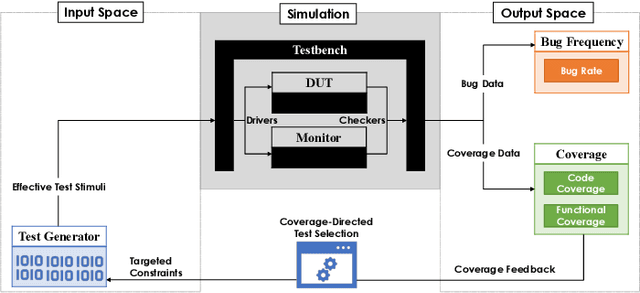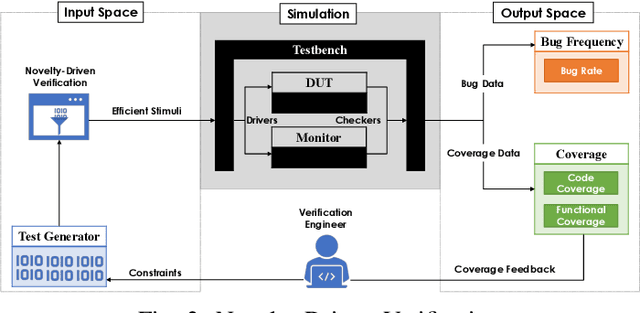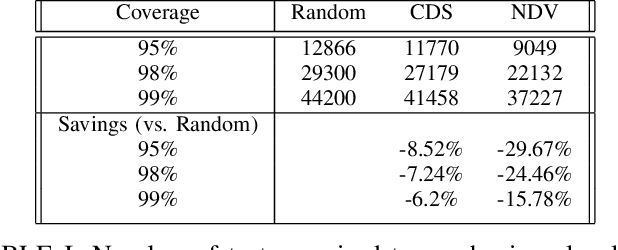Hybrid Intelligent Testing in Simulation-Based Verification
Paper and Code
May 19, 2022



Efficient and effective testing for simulation-based hardware verification is challenging. Using constrained random test generation, several millions of tests may be required to achieve coverage goals. The vast majority of tests do not contribute to coverage progress, yet they consume verification resources. In this paper, we propose a hybrid intelligent testing approach combining two methods that have previously been treated separately, namely Coverage-Directed Test Selection and Novelty-Driven Verification. Coverage-Directed Test Selection learns from coverage feedback to bias testing towards the most effective tests. Novelty-Driven Verification learns to identify and simulate stimuli that differ from previous stimuli, thereby reducing the number of simulations and increasing testing efficiency. We discuss the strengths and limitations of each method, and we show how our approach addresses each method's limitations, leading to hardware testing that is both efficient and effective.
 Add to Chrome
Add to Chrome Add to Firefox
Add to Firefox Add to Edge
Add to Edge